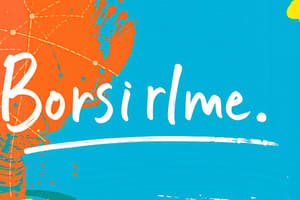Podcast
Questions and Answers
What is a common purpose of memos in a business setting?
What is a common purpose of memos in a business setting?
- To provide updates to internal employees (correct)
- To send formal communications
- To communicate with clients
- To convey detailed proposals
Which of the following is NOT recommended when writing business correspondence?
Which of the following is NOT recommended when writing business correspondence?
- Maintaining a professional tone
- Being clear and concise
- Proofreading carefully
- Using unnecessary technical jargon (correct)
What is a key best practice for maintaining professionalism in business correspondence?
What is a key best practice for maintaining professionalism in business correspondence?
- Customizing messages for the recipient's needs (correct)
- Being discourteous and impolite
- Responding emotionally to difficult situations
- Using informal tone
Which of the following is an essential part of a structured letter format?
Which of the following is an essential part of a structured letter format?
Why is proofreading important in business correspondence?
Why is proofreading important in business correspondence?
When is it appropriate to use faxes in business communication?
When is it appropriate to use faxes in business communication?
Which of the following is NOT a common type of business correspondence?
Which of the following is NOT a common type of business correspondence?
What is the purpose of business correspondence?
What is the purpose of business correspondence?
How does a well-written piece of correspondence reflect on an organization?
How does a well-written piece of correspondence reflect on an organization?
What is one advantage of written business correspondence compared to verbal communication?
What is one advantage of written business correspondence compared to verbal communication?
When are letters commonly used in business correspondence?
When are letters commonly used in business correspondence?
What does the practice of exchanging written messages aim to achieve in business?
What does the practice of exchanging written messages aim to achieve in business?
Study Notes
Navigating the Art of Business Correspondence
In today's interconnected world, clear and professional communication is a cornerstone of success in business. One of the most fundamental forms of that communication is correspondence — the practice of exchanging written messages between individuals or organizations. Understanding the nuances of business correspondence is essential for fostering relationships, expressing ideas, and negotiating agreements with colleagues, clients, and stakeholders.
The Importance of Business Correspondence
Business correspondence provides a written record, which is often more formal and considered than verbal communication. Emails, letters, and memos are used to convey important information, to build rapport, and to establish a sense of professionalism. A well-written, well-structured piece of correspondence demonstrates that you take your communications seriously and that your organization is committed to maintaining high-quality standards.
Types of Business Correspondence
There are several different types of business correspondence, each with a specific purpose and tone. Here are a few of the more common ones:
-
Letters: These are formal communications sent via postal mail or digital channels like email. They are often used for introductory purposes, when presenting proposals, or when thanking someone for their support. Letters usually follow a structured format with specific sections (such as the header, date, salutation, body, closing, and signature).
-
Memos: These are internal communications, typically sent to employees within a company. Memos are used to provide updates, announce new policies, or to convey important information. They can be informal in tone and are often sent via email.
-
Emails: These are the most common form of correspondence in the digital age. Emails are used to convey a wide range of information, from simple requests to detailed proposals. They can be informal or formal in tone, depending on the context and the recipient.
-
Faxes: Although less common than they once were, faxes are still used in certain industries and contexts. They are a fast and efficient way to send and receive documents, but they are generally less environmentally friendly than digital communications.
Writing Effective Business Correspondence
To ensure that your correspondence is effective and well-received, it's essential to follow certain best practices:
-
Know your audience: Understand the background, perspective, and preferences of the recipient. Customizing your message to their needs and expectations will help to make it more impactful.
-
Be clear and concise: Get to the point quickly and avoid any unnecessary jargon or technical language. Stick to the most important information and provide supporting details only when necessary.
-
Maintain a professional tone: Always be courteous and polite, even when responding to difficult or challenging situations. A professional tone will help to maintain rapport and demonstrate your commitment to building strong relationships.
-
Use a clear structure: Organize your message in a logical and easy-to-follow manner. Start with an introduction, provide the main point(s), and conclude with a summary or call to action.
-
Proofread carefully: Errors in spelling, grammar, or punctuation can undermine your credibility and professionalism. Make sure to proofread your correspondence carefully before sending it out.
Conclusion
Business correspondence is an essential skill, and mastering it can help to improve the way you communicate with colleagues, clients, and stakeholders. By being clear, concise, and professional, you can ensure that your messages are well-received and that your relationships are maintained and strengthened. Whether you're sending a letter, an email, or a fax, remember to tailor your message to your audience, maintain a professional tone, and use a clear structure. By following these best practices, you'll be well on your way to becoming an effective and successful communicator in business.
Studying That Suits You
Use AI to generate personalized quizzes and flashcards to suit your learning preferences.
Description
Enhance your professional communication skills by learning about the nuances of business correspondence, including letters, emails, memos, and more. Discover the importance of clear and effective communication in building relationships with colleagues, clients, and stakeholders.




